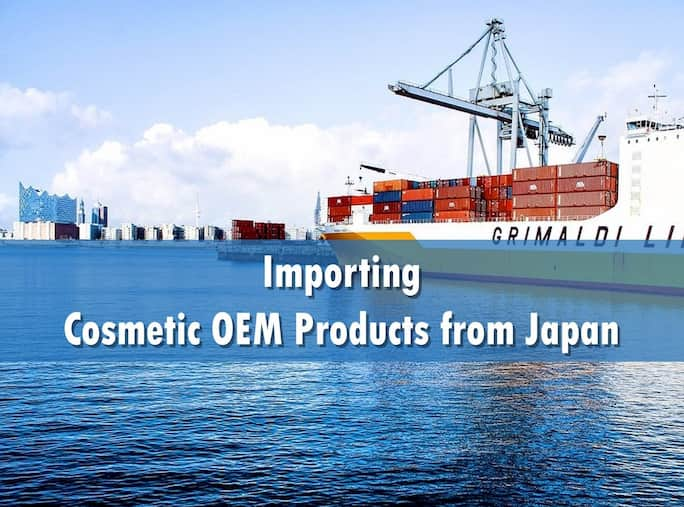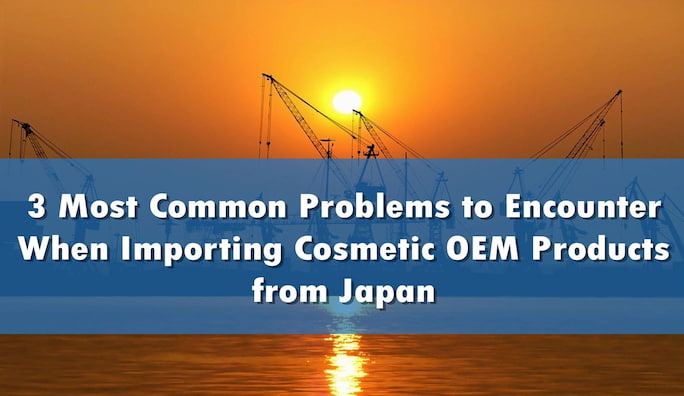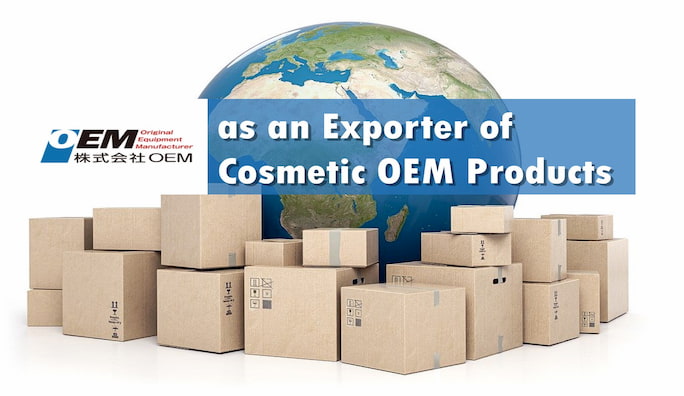
- HOME
- Cosmetic OEM Lab

There is an increasing number of people who want to outsource their cosmetic OEM products to Japanese cosmetic OEM companies but are intimidated by certain difficulties and challenges we will cover in this article.
We will first have a general idea of Japanese made OEM products and from there, we will get straight down to business and share how the import process works and what are some difficulties that wait for you on the way.
Contents

This is a bit hard to put on paper since we have no solid data but it could be safe to claim that the demand for Japanese skincare products has constantly been getting higher, just like Korean products.
After all, it is a fact that more than 40% of tourists visiting Japan, go back with some sort of a cosmetic product in their hands as a souvenir. And it is not rare at all to see Asian tourists buying dozens of products at once.
It doesn`t come as a surprise that there is a certain scale of demand regarding well known Japanese cosmetic products. But how are things for small to medium-sized brands with no considerable public recognition?
Well, once again, no data on this so everything we say will hang in the air but based on personal experience and observation, we could say that the market for small brands is getting wider as well.
East and Southeast Asian countries are the ones with the highest demand for Japanese made cosmetics as the label `Made in Japan` has a highly positive image in those societies as most of our international clients are from this part of the world too.
The inquiries we get from the western parts of the world are mostly centered around the idea to build a Japanese concept brand, the most famous example of which is Tatcha.

There are 3 basic patterns when it comes to exporting cosmetics from Japan.
This is when you export a product that exists in the domestic market as it is, without any changes on the label, design, formulation or whatsoever.
In this case, you don`t need any additional registrations or permits to export the goods from Japan.
*Please note that this covers the export process only, which means until when the goods leave Japanese soil. When the products are to be imported within the country of destination, there will be requirements of registration depending on the local laws in that country. You will find more information later in this article.
So, what happens when you don`t change the formulation but want to replace the label or the design altogether?
In short, even the slightest change in box, container, and formulation will make it deemed as a whole new product. In this case, product registration will be needed.
This is when you make an original product for export without the intention of selling in Japan.
OEM products fall in this category. Paperwork wise, it`s pretty much the same as “2. Importing existing products with modification”.

We listed up 3 of the problems we hear the most from our overseas clients.
Although these do not apply to all companies, they`re far from being rare. Let`s go ahead and examine each of these, one by one.
Despite the country being one of the biggest exporters in the world, your average Japanese company isn`t exporting.
In the past few years, as a result of increasing competition due to the shrinking domestic market, more and more companies have been coming out looking for international expansion. However, it`s still very common that a company does not export at all.
There are quite a few reasons for this. The main reason is that Japan is relatively less integrated to the rest of the world as a result of being an island country in Asia. This results in them feeling insecure when doing business overseas.
It`s the same in the cosmetic OEM industry as well. There is a countless number of manufacturers but only a small group of them are actively and willingly exporting.
Another common problem is that the English speaking population is very limited in Japan.
This is probably one of the reasons why so many companies do not export in the first place but there are still quite a few companies who export although not having any employees who are proficient in English.
In most business scenes, a basic understanding of the language supported by gestures can be enough but that`s hardly the case in a detail-oriented business like the cosmetic OEM industry.
It`s possible to hand out a sample and an explanatory brochure for each product when the product is present but in our business, it just doesn`t work like this.
In most cases, products are designed originally for a certain client and it needs a lot of understanding and explaining.
Language is not the only communication problem. Japanese work culture can be very different than in other countries which makes it difficult to do business with them.
Although this has been getting better over the past few years, it`s still a thing.
Japan is a highly risk-averse society, which results in them taking their time in the decision making process. Also, due to the very strong hierarchy, employees have to take everything up with their supervisors in most companies.
While this makes the whole process stable and strong, it`s not convenient for people who are used to business environments where everything is decided and taken into action at a high pace.

We explained the 3 most common issues we think people have when importing cosmetic OEM products from Japan. Now we would like to explain what we have to offer.
In OEM Co., Ltd., we have been exporting various cosmetic OEM products to 10+ countries in Europe and Asia for over a decade.
These countries are China, Hong Kong, Taiwan, Thailand, Vietnam, India, Singapore, Myanmar, Israel, France, and Belgium.
We have always been eager to find new business partners all over the world as we believe it`s very important to keep up with globalization in this borderless world.
This is one of the things we get evaluated by our clients. As we value a smooth communication process with our clients, we believe in the importance of speaking languages.
Throughout the process, you will be able to obtain any kind of information and documentation in English or Chinese.
Taking pride in our relaxed work environment, we are very quick to respond to our clients.
As a result of having a flexible and adaptive nature, we don`t see any problems in communicating through instant messaging applications such as WhatsApp, Line, and WeChat, for our clients who do not enjoy long e-mails.
We do our bests to be cooperative both in and out of the office as we always make sure we take that extra step to make the process smoother for our clients.
We worked with clients who were first-timers and had never imported cosmetics before and learned a lot together throughout the process, thanks to our employees who specialize in international trade.
We provide any kind of documentation required for import to the best of our abilities.

Importing cosmetic OEM products is usually a difficult process and has a lot of challenges in the beginning.
Importing from Japan could even be a lot more difficult due to the reasons such as communication problems and cultural differences as well as legal factors.
But just like everything else, it gets easier with time and experience. In OEM Co., Ltd., we do our best to provide you a pleasant and problem-free process as well as delivering products that surpass your expectations.
Please feel free to inquire about anything you would like to know.
Inquiry
For further information, please contact us.